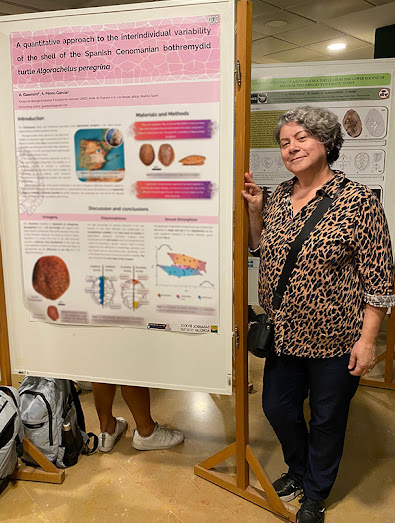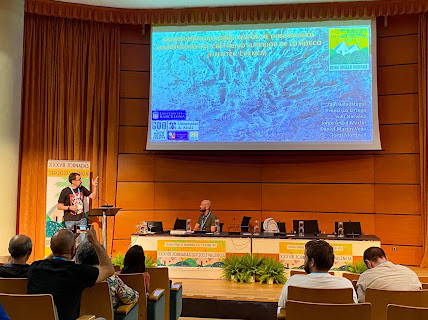En la última reunión de la Sociedad Española de Paleontología, las XXXVIII Jornadas celebradas este año en Valencia, se presentó una charla titulada “The relationship between diet, size, and palatal shape in eusuchians (Crocodyliformes, Eusuchia)”. En este trabajo se presentó la relación evolutiva que existe entre tamaño y forma del paladar en el clado de los cocodrilos eusuquios, así como también cómo se interrelaciona todo esto con su tipo de dieta. Los resultados indican que existe una relación alométrica evolutiva en todos los grandes clados de cocodrilos eusuquios analizados, a excepción de los aligatoroideos. Por otro lado, los análisis muestran que las dimensiones rostrales se relacionan primordialmente con la dieta de estos animales y que también el tamaño de éstos juega un papel en su dieta. De este modo, los eusuquios de pequeño tamaño suelen tener un rostro corto y ancho y son durófagos, mientras que los eusuquios de gran tamaño suelen tener rostros alargados y estrechos y son piscívoros. A continuación puede leerse el resumen del trabajo:
In vertebrates, it is fairly common to find a correlation between diet and cranial shape, either in the entire cranial structure or in a specific region of the skull, especially in those with specialised diets. In the case of crocodyliforms, numerous studies have linked cranial shape to diet category, but this relationship was originally reduced to overall rostral dimensions. However, recent studies argue that the relationship between diet and cranial shape, and the delimitation of dietary categories in Crocodyliformes is more complex than previously thought. Most extant crocodylians are known to be semiaquatic opportunistic ambush predators whose prey preferences change throughout ontogeny, complicating their classification and dietary inference in fossil specimens. Furthermore, since the bony secondary palate is closely associated with the feeding process, it is expected that dietary preferences and specialised feeding modes will be reflected in the palatal shape. However, the relationship between diet and palate shape has not been quantitatively assessed yet, and therefore this study aims to investigate this relationship in the palate of eusuchians using geometric morphometrics. This study includes an extensive dataset of craniums of adult specimens from all extant crocodylian species and several extinct eusuchians (n = 251), providing good phylogenetic coverage and representativeness of the morphological and dietary variability in Eusuchia. Dietary classification was based on recent studies discussing the dietary affinities of crocodyliforms, and the relationship between shape, diet, and size was analysed, including the influence of phylogeny, using phylogenetic comparative methods. Results indicate that palatal shape and diet are related, and that there is also a significant interaction term between diet and size. Thus, eusuchians specialised in small prey (e.g., piscivores) are generally large animals with elongated and narrow palates, whereas durophagous eusuchians are generally small animals with short and broad palates.
-----
Más información:























































- Síguenos en Twitter
- "Síguenos en Facebook
- RSS
Contacto